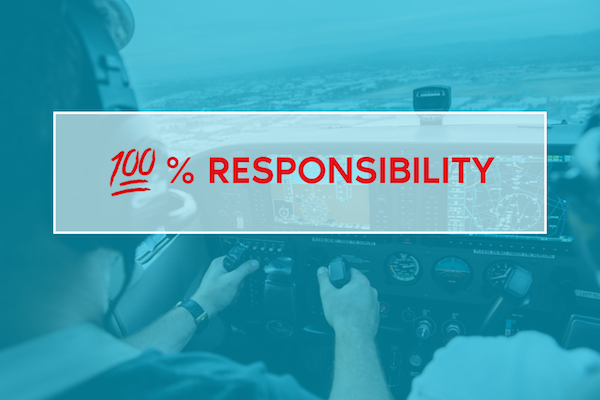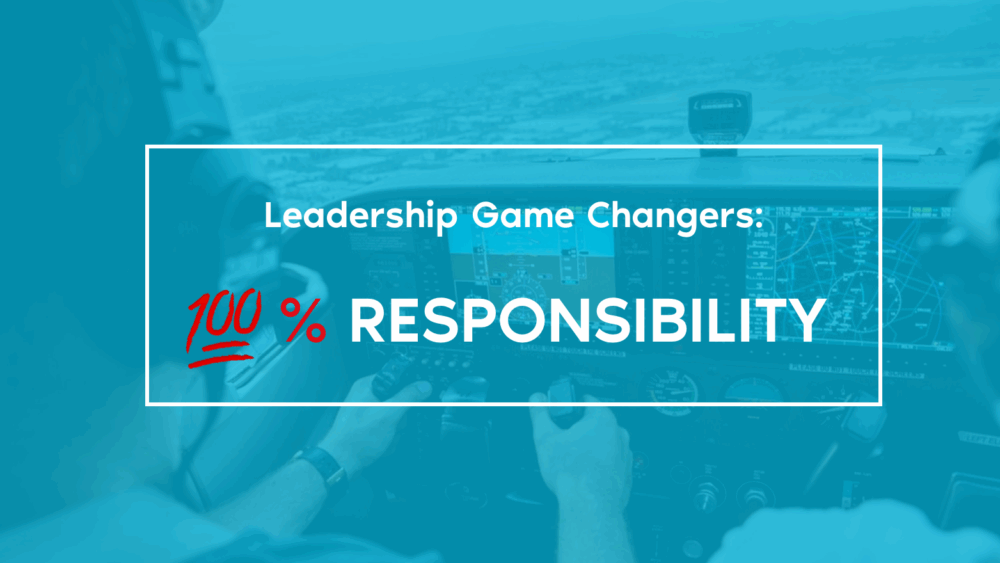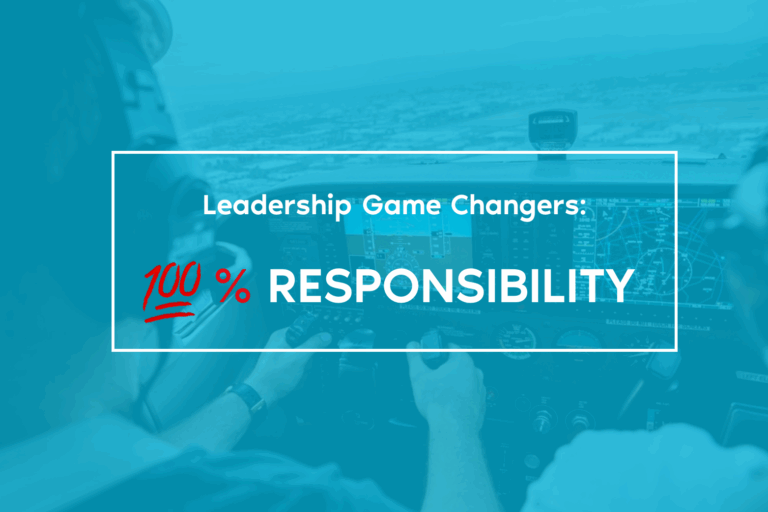A 💯% Responsibility Exercise
I’ve been thinking a lot about my “model” or “definition” of leadership in the context of what I do as a coach to leaders or companies and what I deeply care about pertaining to the Conscious Leadership practices we bring to companies, camp and forums.
I first tried on authenticity. I believe that all leadership is amplified if leaders are able and willing to show up as their true selves and to be revealed — thoughts, feelings, judgments and the rest. It’s also critical that they allow their team members to show up in the same way. This is powerful, but it’s not all the way there.
I then tried on contentment. Not contentment in the sense of resignation or compromise, but the true sense of that word: that more effective leaders have a high degree of contentment and joy in their work. The theory is that a leader couldn’t reach that without operating often in his or her Zone of Genius. This also felt incomplete.
Next up was alignment. Leaders who show up as their true selves and are more aligned with their purpose and their Zone of Genius would be more authentic (easy because there’s so little friction between what they want and what they’re up to), more content, and more effective. This idea felt like the biggest yet, but it still felt lacking.

Finally I settled on the notion of 100% Responsibility as the broadest leadership model I could get behind. Conscious Leadership is built around the idea that optimal leadership looks like taking 100% responsibility for success, outcomes, actions, thoughts, and the rest. Unlike the word “accountability,” however, which is largely uttered only when someone has taken less than 100%, our concept also suggests that taking more than 100% responsibility is also sub-optimal. When we routinely take more than 100%, others will gravitate toward taking less, operating from a victim consciousness.
What I like about this term as the bedrock is that it incorporates all of what we frame as the “choices” of conscious leadership: candor, feeling emotions, zone of genius, curiosity, wins-for-all, and more.
Below is one easy, low-impact exercise to raise awareness of 100% responsibility over the next two weeks. We’ll be blogging at least that often, and each bi-weekly blog will contain another pro tip for conscious leadership in your daily life.
Here goes:
Opposite of Your Story, Taking 100% Responsibility for Your Judgments and Getting Curious
- Have a judgment that feels pretty heated? Jot down the judgment: e.g., “Fred is bossy”
- Think of a scenario in which you can picture a time when you noticed Fred was bossy. This should be a specific moment that you can replay on your mental movie reel.
- Flip your judgment to “Fred is not bossy” (one of many opposites of the judgment) and find 3 ways or pieces of evidence that prove this revised judgment true. Ask “How is it true that Fred is not bossy…” and find three ways it IS true, even if those examples are small (it’s helpful to revisit the movie reel for examples of evidence, but if you need to go to other scenarios, that’s fine too).
- Next, flip it to “I am bossy” (opposite of the judged) and find 3 ways that revised judgment is true. Ask “How is it true that I am bossy? Again, try to revisit the movie reel and see if you can find examples there first.

Now, you may walk away still committed to the judgment that Fred is bossy, but you now have more information. Maybe Fred is only bossy in certain situations, or about certain topics. Fred may actually be less bossy than you thought. You may be bossy sometimes, too. Or you may at least have enough evidence to consider the possibility that the opposite of your judgment is just as likely to be true as the judgment itself. Pretty neat stuff.
This simple, user-friendly exercise is based on the work of Byron Katie. Find more at www.thework.com. Find more resources on 100% responsibility at Conscious.is and from Kaley Klemp.
—
Want to learn more about how to implement Conscious Leadership in your leadership or that of your team or company? Attend an upcoming Leadership Camp or reach out to us to learn more about how we work with leaders and companies.


